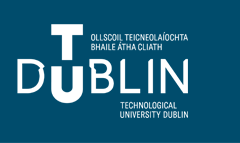Author ORCID Identifier
https://orcid.org/0000-0001-7362-9916
Document Type
Doctoral Thesis
Disciplines
Applied mathematics
Abstract
Photopolymerization is a complex physicochemical process that uses a specific wavelength of light to convert a liquid monomer resin to a solid polymer. This study investigates the evolution of photopolymerization kinetics through mathematical modeling and simulation in different industrial applications, such as stereolithography, ceramics additive manufacturing, and photonic crystal fabrication. In stereolithography, existing photopolymerization models do not fully capture the complexity of the curing process. Therefore, we develop a novel model for photopolymerization kinetics in a realistic stereolithography setting, which attempts to advance the understanding of the impact of several material properties and parameters on this process. This model significantly enhances the prediction accuracy of the curing process. An important application of our model is to investigate the influence of light scattering on photopolymerization kinetics when ceramic particles are included in a photocurable slurry. This investigation particularly emphasizes the additive manufacturing of ceramics. The results show that ceramic particles enhance the curing process and reduce heat generation, leading to more uniform and complete polymerization throughout the resin. Finally, a different modeling and simulation approach is employed to study the formation of photonic crystals on a photopolymer material using multiple beam interference, representing a generalization of the existing two-way diffusion theory. The model successfully verifies that a two-dimensional illumination pattern is copied into a similar holographic grating through photopolymerization. Furthermore, all the presented models, accompanied by appropriate boundary and initial conditions, are solved numerically, and we provide validation and verification steps for each modeling and simulation approach.
DOI
https://doi.org/10.21427/0ngw-f913
Recommended Citation
Shaban, Maged, "Mathematical Modeling and Simulation of the Photopolymerization Process in Different Industrial Applications" (2024). Doctoral. 276.
https://arrow.tudublin.ie/sciendoc/276
Funder
European Union’s Framework Programme for Research and Innovation Horizon 2020
Creative Commons License

This work is licensed under a Creative Commons Attribution-NonCommercial-Share Alike 4.0 International License.


Publication Details
This dissertation is submitted in partial fulfilment of the requirements for the award of Doctor of Philosophy (PhD) at Technological University Dublin, May 2024.
doi:10.21427/0ngw-f913